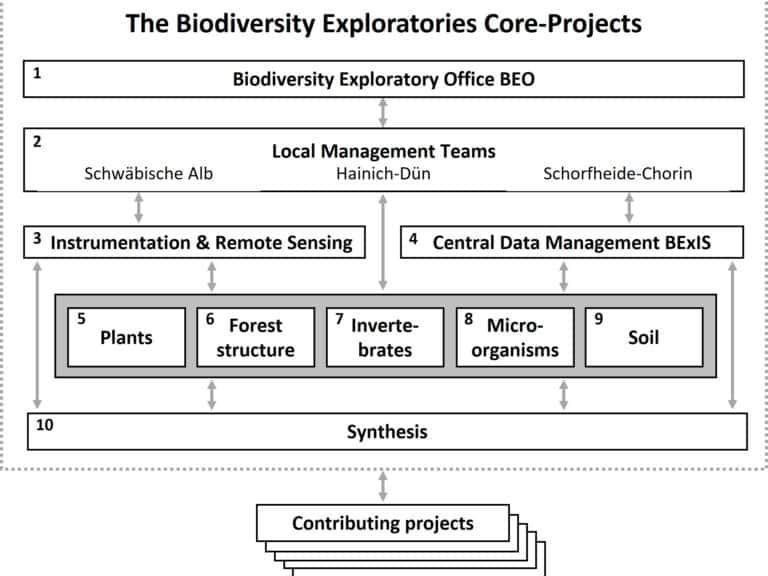Research platform
The Biodiversity Exploratories (BE) are a unique, open research platform and the largest of its kind in Europe. The Infrastructure Priority Programme (SPP 1374) funded by the German Research Foundation (DFG) is characterised by:
- Interdisciplinarity – Around 250 research participants from different scientific disciplines work together on different aspects of biodiversity on the same plots, following common research objectives of the Biodiversity Exploratories.
- Completeness – With the research-design almost all of the biodiversity is recorded. Thus, not only individual species are studied, but species and species groups from different groups of organisms from different trophic levels as well as species living above and below ground.
- Spatial scaling – Biodiversity and ecosystem processes are studied at different spatial scales, from plot to landscape level.
- Long-term nature – The studies have been taking place on the same plots since 2006.
- Comparability – The questions of the individual projects are addressed on the numerous real farmed areas of the three study regions in Germany with the same, standardised methods.
- Central data management and data sharing: All data and results from the 141 projects so far are shared via a Central Data Management (BExIS) archived and made available to all researchers and, to a large extent, the general public.
The Biodiversity Exploratories serve as an inspiring research platform for the entire German biodiversity research community. If you would like to participate with a project, then you will find further information: here.
History
As part of an initiative to promote biodiversity research in Germany, three large long-term study areas were established in Germany in 2006-2009. These exploratories are used for comparative and experimental biodiversity and ecosystem research. The German Research Foundation (DFG) has been funding this project since its inception, making biodiversity research possible for the first time on a large scale, on real farmland, combined with a long-term perspective. The project is currently in its seventh phase, which will end at the end of February 2026.












